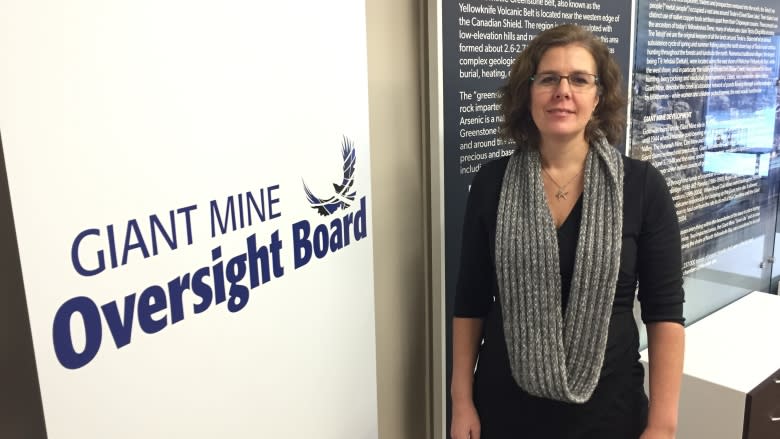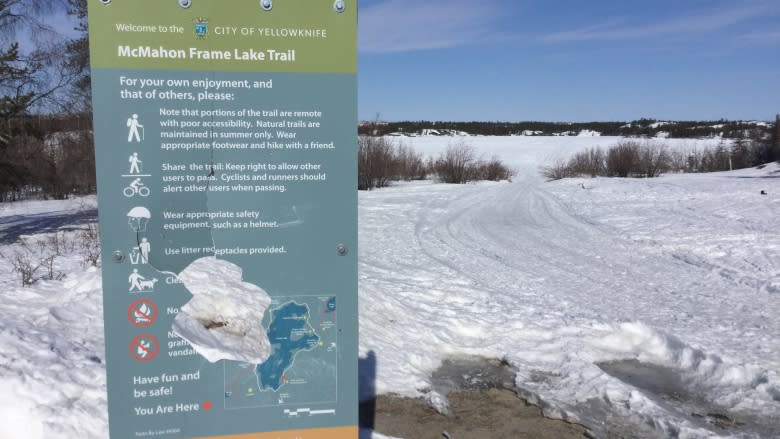'Nobody's taking responsibility': Board says gov'ts must address Yellowknife's arsenic problem
Over a decade since Yellowknife's Giant Mine closed its doors for the final time, it's still not clear who will take responsibility in addressing the tonnes of arsenic trioxide dust that has settled in and around the city, according to the first report released by the Giant Mine Oversight Board.
- Giant Mine Oversight Board establishment report July 2015 - December 2016 (PDF)
The board, an independent body responsible for advocating for the monitoring and promotion of the remediation of the Giant Mine site itself, consists of six directors appointed by each of the parties in the Giant Mine Remediation Project Environmental Agreement. Those members include the federal government, Government of the Northwest Territories, and City of Yellowknife, as well as the Yellowknives Dene First Nation, North Slave Métis Alliance, and Alternatives North.
The board made 12 recommendations in an establishment report, released April 11. One of those recommendations, titled "off-site contamination," noted that "no government department has accepted responsibility for assessing and remediating off-site contamination caused by historic operations at Giant Mine."
- FEATURE | Is Yellowknife ready to reckon with its toxic legacy?
"When we go to meetings, a lot of people from the public show up, and they don't have questions about the Giant Mine Remediation Project," said Kathy Racher, the board's chair. "They have questions about, are their kids safe to swim in the lake? Is the fish safe to eat? Are their berries safe?"
"And because there's no organized or structured committee to deal with those issues, there's no place for people to go to ask those questions. The GNWT has issued some health advisories, but we're just finding it's too loose, nobody's taking responsibility for that."
The board recommends that the federal, municipal, and territorial governments "make it a priority to initiate a process to ensure off-site contamination is appropriately addressed to protect public health and the environment."
Approximately 19,000 tonnes of toxic arsenic trioxide dust settled in Yellowknife and the surrounding area during the life of Giant Mine, which closed in 2004 after 56 years of operation.
Who's responsibility is it?
Miscommunication between government departments was made evident this week after CBC reported that the territory's health department didn't know that Kam Lake, which lies inside the city, was being regularly tested for arsenic levels.
The tests were being performed by Miramar Northern Mining Ltd. as part of their remediation of the nearby Con Mine site, which is also responsible for arsenic dust settling in Yellowknife, and are publicly available on the Mackenzie Valley Land and Water Board's website.
However, a public health advisory issued earlier this month by the territorial government cited arsenic levels for the lake from a study from 1989. Miramar's latest report included data from October 2016.
When asked, health department officials said they relied on the Department of Environment and Natural Resources to provide them with data for their advisories. Officials from that department said they were aware of the Miramar study, and provided the health department with the information last week.
Another example of miscommunication between governments is in regards to signs warning the public of arsenic contamination in Frame Lake. Last year, a territorial government official said signs will be posted along the lake. However, nearly a year later, no signs have been posted.
When asked about the signage, Dr. Andre Corriveau, the territory's chief public health officer, said his department isn't responsible for putting up signs.
"We will provide some advice on what the sign should say, but we don't put up the signs ourselves," he said. "So it would really be the City, or the owner of the property."
However, Nalini Naidoo, the City of Yellowknife's communications director, said in an email that the city was "committed to installing any signs that the CPHO/GNWT [chief public health officer] provide to the City based on their findings."
Presented with Corriveau's response, Naidoo said the City would speak further with the health department.
Racher said the Giant Mine Oversight Board is worried that the lack of clarity on who exactly is responsible for cleanup outside of the Giant Mine site is "going to hamper progress going forward."
The board is hoping a full remediation of the site — which will be done by a remediation project team run jointly by the federal and territorial governments — will begin in 2021.



